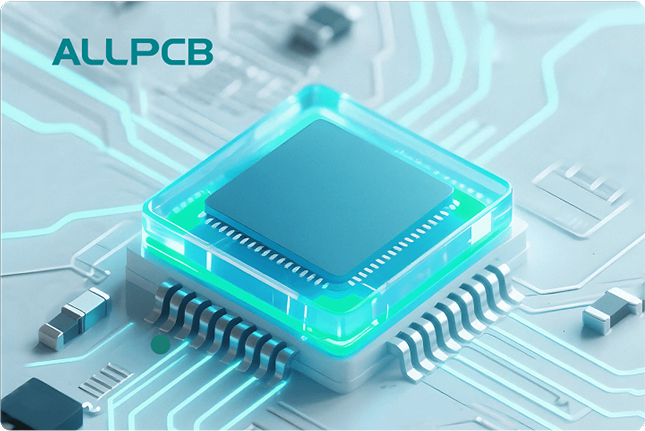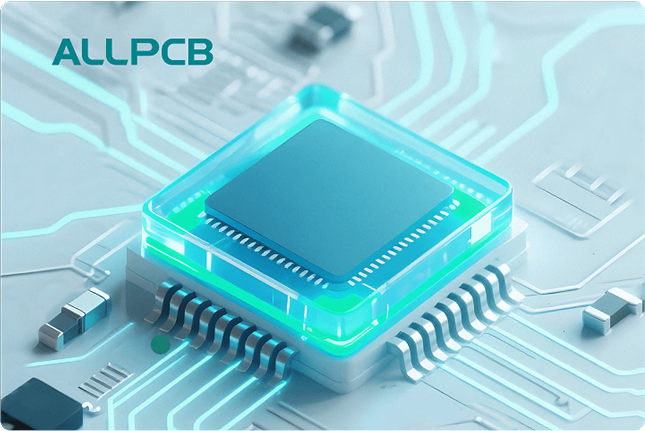When it comes to PCB manufacturing, one of the biggest decisions is whether to use pick and place machines for automated assembly or stick with manual assembly methods. Both approaches have their strengths and weaknesses, but which one offers the best value for your project in terms of cost, quality, and efficiency? In this comprehensive guide, we’ll break down the cost-benefit analysis of pick and place vs. manual assembly, helping you make an informed decision for your PCB production needs. Whether you’re focused on PCB assembly cost, SMT assembly ROI, or weighing manual PCB assembly pros and cons, this post will provide actionable insights.
Let’s dive into the details of automated assembly benefits and manual methods to see how they stack up in real-world scenarios.
Understanding PCB Assembly: Why the Method Matters
PCB assembly is the process of placing components onto a printed circuit board to create a functional electronic device. The method you choose—whether automated with pick and place machines or manual hand assembly—directly impacts production speed, accuracy, and overall cost. Surface Mount Technology (SMT) is the most common approach for modern electronics, and it can be done either manually or with automated systems. The right choice depends on your production volume, budget, and quality requirements.
In this post, we’ll compare these two methods across key factors like cost, scalability, and return on investment (ROI). By the end, you’ll have a clear picture of which method aligns with your manufacturing goals.
What is Pick and Place Assembly?
Pick and place assembly refers to the use of automated machines to precisely place components onto a PCB. These machines use robotic arms, vision systems, and pre-programmed instructions to pick components from reels or trays and place them onto the board at high speeds. This method is widely used in SMT assembly, where tiny components are mounted directly onto the surface of the PCB.
The key advantage of pick and place technology is its speed and precision. High-end machines can place thousands of components per hour—sometimes up to 100,000 components per hour on advanced models—while maintaining accuracy down to fractions of a millimeter. This makes it ideal for high-volume production runs where consistency is critical.
Benefits of Automated Pick and Place Assembly
- Speed and Efficiency: Automation drastically reduces assembly time. For example, a mid-range pick and place machine can handle 20,000 to 30,000 placements per hour, compared to a skilled technician who might manage 100 to 200 placements in the same time frame.
- Accuracy: Automated systems use cameras and sensors to ensure components are placed with pinpoint precision, reducing errors like misalignment or incorrect polarity.
- Scalability: Pick and place machines are built for high-volume production, making them cost-effective for large orders of 1,000 units or more.
- Consistency: Automation eliminates human error, ensuring every board meets the same quality standards.
- Labor Cost Savings: Once set up, these machines require minimal human intervention, cutting down on labor expenses over time.
What is Manual PCB Assembly?
Manual PCB assembly involves technicians placing components onto the board by hand, often using tools like tweezers, soldering irons, and magnifying glasses. This method is more common for through-hole components, where leads are inserted into holes on the PCB, though it can also be used for SMT in smaller-scale projects.
Manual assembly is typically slower and more labor-intensive than automated methods, but it offers unique advantages for certain scenarios, such as prototyping or low-volume production.
Benefits of Manual PCB Assembly
- Low Initial Cost: Manual assembly doesn’t require expensive machinery or setup fees, making it accessible for startups or small batches.
- Flexibility: Technicians can easily adapt to design changes or unique component requirements without reprogramming a machine.
- Ideal for Prototyping: For small runs of 1 to 10 boards, manual assembly is often faster and more cost-effective since there’s no need for machine setup.
- Custom Work: Manual methods excel in handling non-standard components or complex designs that automated systems might struggle with.
Drawbacks of Manual PCB Assembly
- Time-Intensive: Hand placement is slow, especially for boards with hundreds or thousands of components.
- Higher Error Rates: Human error can lead to issues like incorrect component placement or soldering defects, impacting quality.
- Labor Costs: For larger volumes, the cost of skilled labor adds up quickly, making manual assembly less economical.
- Inconsistency: Quality can vary between technicians or even between batches, which is a risk for larger projects.
Cost Comparison: Pick and Place vs. Manual Assembly
One of the most critical factors in choosing between pick and place and manual assembly is cost. Let’s break down the expenses associated with each method to give you a clearer picture of PCB assembly cost.
Initial Investment
Automated pick and place systems require a significant upfront investment. Entry-level machines start at around $50,000, while high-speed industrial models can cost upwards of $500,000. Additionally, there are costs for setup, programming, and maintenance. For small businesses or startups, this can be a major barrier.
In contrast, manual assembly has a much lower initial cost. Basic tools like soldering stations and workstations can be acquired for under $1,000. However, you’ll need to account for the cost of hiring and training skilled technicians, which can vary based on location and expertise.
Per-Unit Cost and Volume Considerations
The cost per unit tells a different story depending on production volume. For low-volume runs (under 100 units), manual assembly often has a lower per-unit cost because there’s no machine setup fee or programming time. For instance, assembling a small batch of 10 boards might cost $50 to $100 per board manually, including labor.
However, as volume increases, automated assembly becomes far more cost-effective. Pick and place machines can reduce per-unit costs to as low as $5 to $10 per board for runs of 1,000 units or more, thanks to faster production and reduced labor needs. The break-even point often lies around 100 to 500 units, depending on the complexity of the board and labor rates.
Hidden Costs
Don’t overlook hidden costs when calculating PCB assembly cost. For automated systems, these include machine downtime, repairs, and software updates. For manual assembly, hidden costs might involve rework due to errors, employee turnover, and overtime pay during peak production periods.
SMT Assembly ROI: Is Automation Worth It?
When evaluating SMT assembly ROI, the key question is whether the long-term benefits of automation justify the initial investment. Let’s look at some numbers to illustrate this.
Suppose a mid-range pick and place machine costs $100,000 and can assemble 25,000 components per hour. If you produce 10,000 boards annually, with each board requiring 100 components, you’re looking at a total of 1,000,000 placements per year. At this rate, the machine could complete your annual production in just 40 hours, compared to thousands of hours for manual assembly. Even factoring in maintenance costs of $5,000 per year, the savings on labor—potentially $50,000 or more annually—can lead to a full ROI within 2 to 3 years.
For smaller operations, the ROI timeline might be longer. If you only produce 1,000 boards per year, the machine’s capacity is underutilized, and manual assembly might remain more cost-effective. The decision hinges on your production volume and growth projections.
Quality and Reliability: Which Method Delivers?
Beyond cost, quality is a major consideration in PCB manufacturing. Automated pick and place systems offer unmatched precision, with placement accuracy often within 0.01 mm. This reduces the risk of defects like tombstoning (when components stand on end) or insufficient solder, which are more common in manual assembly.
Manual assembly, while prone to human error, allows for greater control in unique situations. For example, a technician can visually inspect and adjust components on the fly, catching issues that a machine might miss. However, as production scales, maintaining consistent quality manually becomes challenging.
Scalability and Future Growth
If you’re planning for long-term growth, automated assembly offers clear advantages. Pick and place machines can handle increasing volumes without a proportional increase in costs, while manual assembly requires hiring and training additional staff, which can become unsustainable.
For businesses starting small, a hybrid approach might work best. Use manual assembly for prototypes and small runs, then transition to automation as your production needs grow. Many contract manufacturers offer flexible services to support this strategy.
Manual PCB Assembly Pros and Cons: A Summary
To help you weigh your options, here’s a quick summary of manual PCB assembly pros and cons:
- Pros: Low upfront cost, ideal for small runs, flexible for custom designs, no setup time for machines.
- Cons: Slow production speed, higher error rates, costly for high volumes, inconsistent quality.
Automated Assembly Benefits: Why It’s the Future
The automated assembly benefits are hard to ignore, especially for medium to large-scale production. Here’s why many manufacturers are making the switch:
- Cost Efficiency at Scale: Lower per-unit costs for high volumes save money over time.
- Faster Turnaround: Meet tight deadlines with rapid production cycles.
- Improved Quality: Consistent, error-free assembly enhances product reliability.
- Competitive Edge: Automation allows you to take on larger orders and grow your business.
Which Method Should You Choose?
Choosing between pick and place and manual assembly ultimately depends on your specific needs. Here are some guidelines to help you decide:
- Choose Manual Assembly If: You’re working on prototypes, small batches (under 100 units), or custom designs with frequent changes. It’s also a good fit if budget constraints prevent investing in automation.
- Choose Pick and Place If: You’re producing medium to high volumes (over 500 units), need consistent quality, or want to scale your operations in the future. The upfront cost is higher, but the long-term savings and efficiency often outweigh it.
For many businesses, partnering with a reliable PCB assembly service can bridge the gap. These providers often offer both manual and automated options, allowing you to choose the best method for each project without investing in equipment yourself.
Conclusion: Balancing Cost and Quality in PCB Manufacturing
In the debate of pick and place vs. manual assembly, there’s no one-size-fits-all answer. Manual assembly shines for low-volume, custom work where flexibility and low initial costs are priorities. On the other hand, automated pick and place assembly offers unbeatable speed, precision, and cost savings for larger production runs, making it a worthwhile investment for growing businesses.
By understanding your production volume, budget, and quality needs, you can make a strategic choice that maximizes value. Whether you’re optimizing for PCB assembly cost, calculating SMT assembly ROI, or exploring automated assembly benefits, this cost-benefit analysis equips you with the knowledge to move forward confidently in your PCB manufacturing journey.
 ALLPCB
ALLPCB







